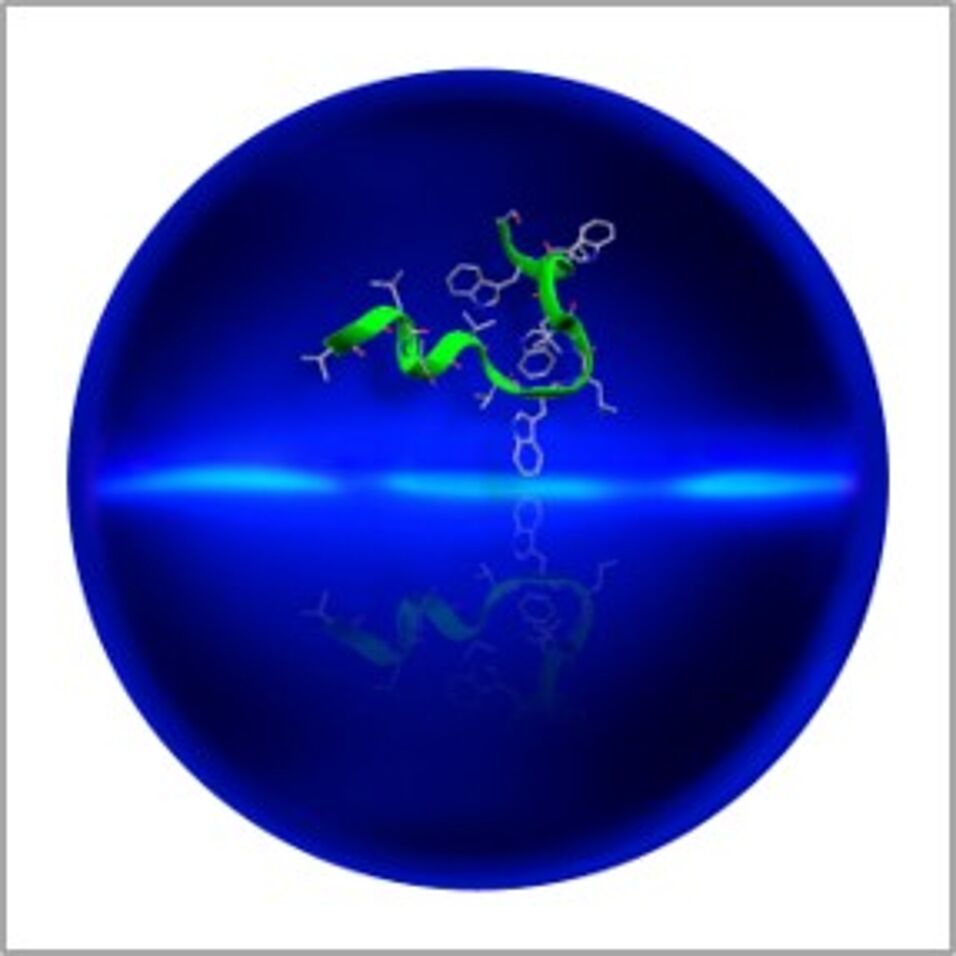One of the central tenets of quantum mechanics is the wave-particle duality. It tells us that even massive objects behave like both particles and waves. A number of previous experiments have shown this for electrons, neutrons, atoms and even large molecules. Quantum theory maintains that this is a universal property of matter. However, it had been notoriously difficult to extend this research to complex biomolecular systems. New experiments at the University of Vienna, supported by quantum chemical modelling at Stanford University now demonstrate for the first time the quantum wave nature of a complex antibiotic polypeptide, here gramicidin. The results have been published in Nature Communications.
Quantum interference with building blocks of life
The particle-wave duality is a ubiquitous phenomenon in quantum physics and even though it has been known for nearly a century, it still triggers puzzlement when we see it realized in complex matter: how can an object be delocalized in a wave-like manner? If quantum physics is a universal theory: how complex can an object be to still observe this counterintuitive behaviour? Does it still apply to larger lumps of matter, or even to the building blocks of life, such as for example peptides and proteins?
The research group around Markus Arndt at the University of Vienna is developing sophisticated tools to launch, diffract, interfere and detect complex molecules. However, testing quantum physics with long amino acid chains had remained prohibitive up to now. They had to overcome the challenges related to generate sufficiently intense beams of these biopolymers, to isolate them in high vacuum from any perturbing environment, and to establish coherent tools to probe their quantum nature.
In the new work published in Nature Communications, Armin Shayeghi and colleagues demonstrate for the first time quantum interference of the natural polypeptide gramicidin, an antibiotic made of 15 covalently bound amino acids. A key to this success was the use of ultrafast and intense laser light to desorb the peptides before they could decompose and matter-wave interferometry exploiting diffraction elements based on quantum measurement. These techniques shall pave the way to even more complex biological nanomaterials from proteins to DNA. This research is driven by the fundamental interest in exploring the limits of quantum physics and in establishing novel quantum-enhanced technologies as minimally invasive analytical tools for individual biomolecules isolated in the gas phase.
Experimental approach
Femtosecond short ultraviolet laser pulses knock the fragile molecules off a surface. The particles are swept away in a jet of cold argon atoms. Travelling at velocities of up to 600 m/s the gramicidin molecules have a tiny wavelength of only 350 femtometers, about a ten thousandth of the diameter of the biomolecules themselves. Shayeghi et al. used a very sensitive technique known as time-domain Talbot-Lau interferometry to measure their quantum fringe pattern and find that the molecular coherence is delocalized over more than 20 times the size of the molecules, which can only be explained by quantum mechanics. This conclusion is corroborated by additional high-level quantum chemical calculations, in collaboration with Todd J. Martinez from Stanford University, predicting electronic structure and properties that enter phase-space simulations to model the interference process.
“Our new technique will enable detailed studies of the quantum properties of biomolecules and it paves the way for a new kind of optical spectroscopy of biologically relevant molecules” says Shayeghi.
- Publication in Nature Communications:
A. Shayeghi, P. Rieser, G. Richter, U. Sezer, J. Rodewald, P. Geyer, T. J. Martinez, and M. Arndt, Matter-wave interference of a native polypeptide, Nat Commun 11, 1447 (2020).
DOI: 10.1038/s41467-020-15280-2



